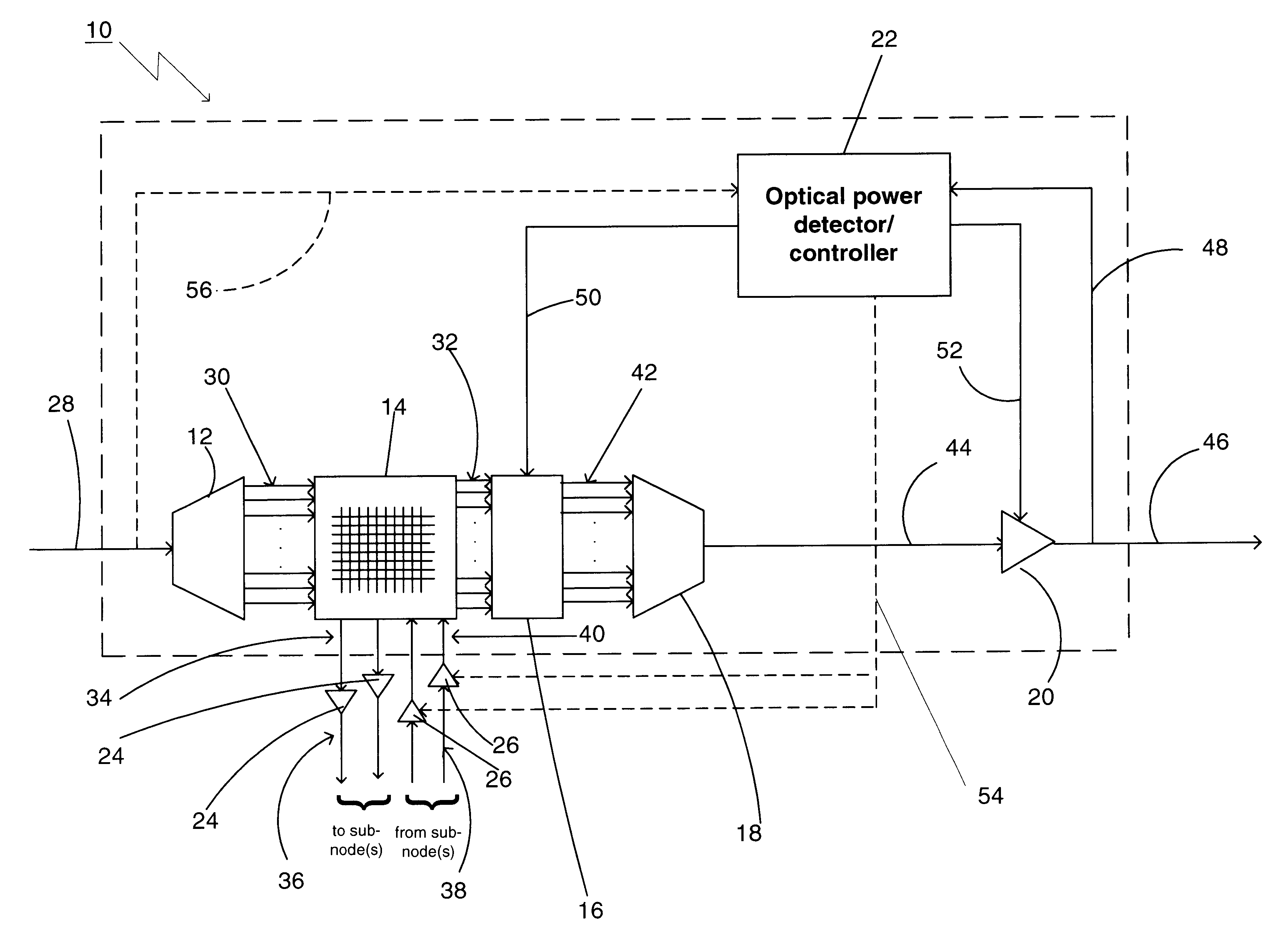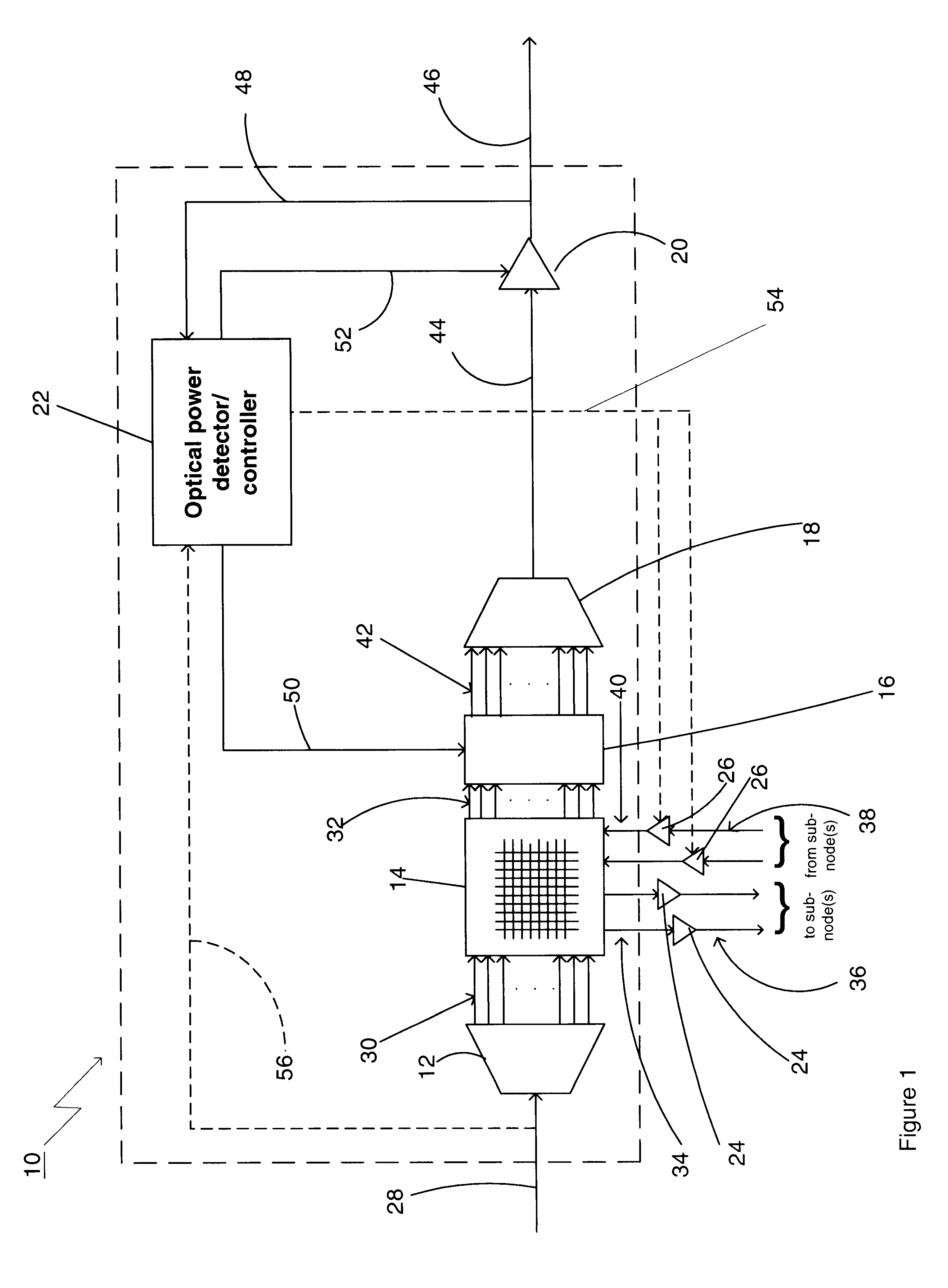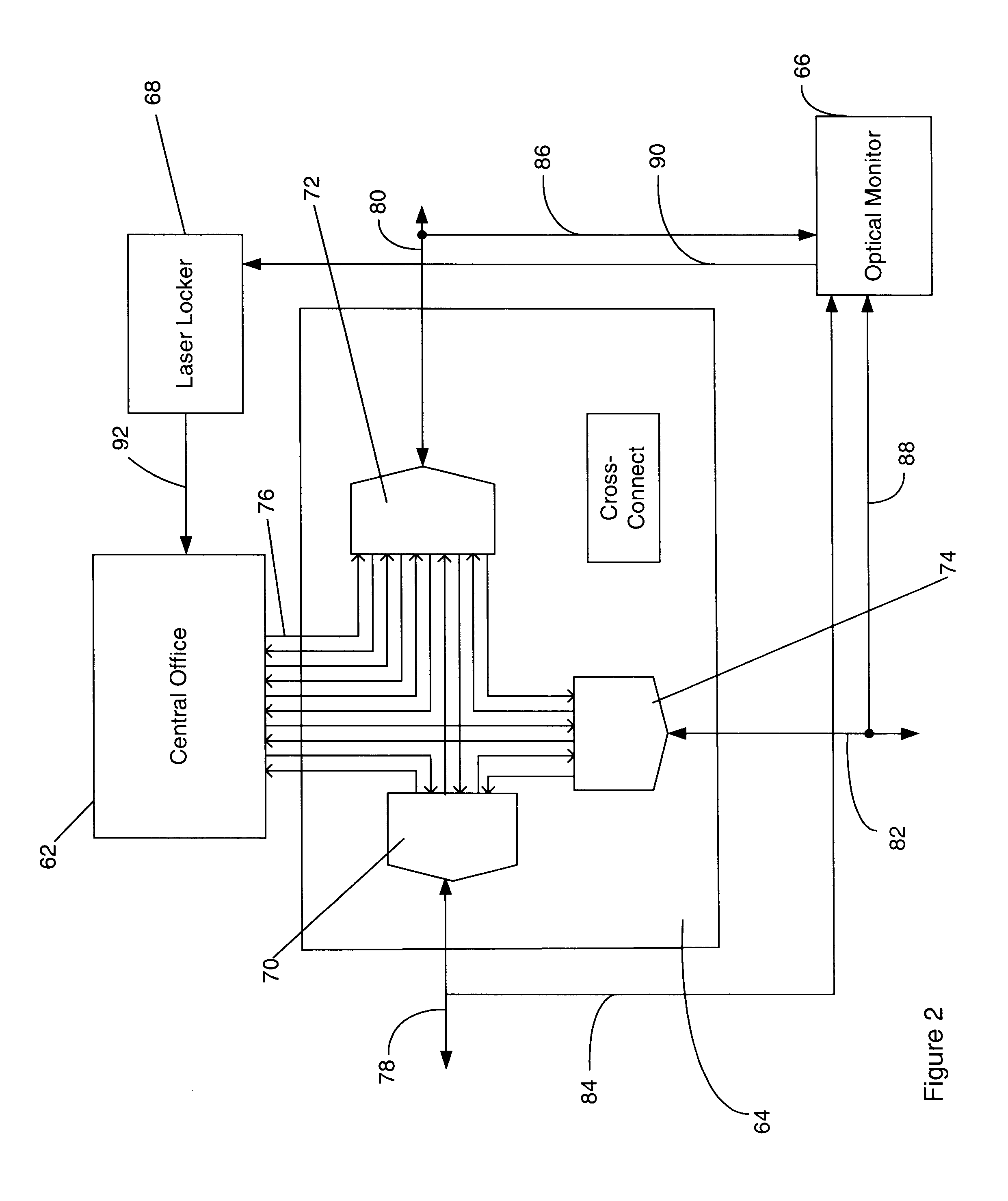Optical power managed network node for processing dense wavelength division multiplexed optical signals
a technology of optical signals and network nodes, applied in the field of optical power managed network nodes for processing dense wavelength division multiplexed optical signals, can solve the problems of optical signals that are "added" to the network at the optical add/drop network node are also typically subject to multiplexing function loss, and the loss of power of optical signals is typically not high enough to achieve the effect of efficient and cost-effectiv
- Summary
- Abstract
- Description
- Claims
- Application Information
AI Technical Summary
Benefits of technology
Problems solved by technology
Method used
Image
Examples
Embodiment Construction
)
Referring to FIG. 1, there is shown a schematic diagram of a preferred embodiment of an optical power managed network node 10 for processing dense wavelength division multiplexed optical signals in accordance with the present invention. The optical power managed network node 10 comprises a demultiplexing device 12, a switching device 14, a plurality of variable optical attenuators 16, a multiplexing device 18, a variable optical amplifier or gain element 20, a wavelength-selective optical power detector / controller 22, a first plurality of optical receivers / transmitters 24, and a second plurality of optical transmitters / receivers 26. The optical power managed network node 10 operates, through its aforementioned constituent parts, as follows.
The demultiplexing device 12 receives a first dense wavelength division multiplexed (DWDM) polychromatic optical signal on an optical input fiber 28. The first DWDM polychromatic optical signal contains a first plurality of narrowband optical sig...
PUM
 Login to View More
Login to View More Abstract
Description
Claims
Application Information
 Login to View More
Login to View More - R&D
- Intellectual Property
- Life Sciences
- Materials
- Tech Scout
- Unparalleled Data Quality
- Higher Quality Content
- 60% Fewer Hallucinations
Browse by: Latest US Patents, China's latest patents, Technical Efficacy Thesaurus, Application Domain, Technology Topic, Popular Technical Reports.
© 2025 PatSnap. All rights reserved.Legal|Privacy policy|Modern Slavery Act Transparency Statement|Sitemap|About US| Contact US: help@patsnap.com



